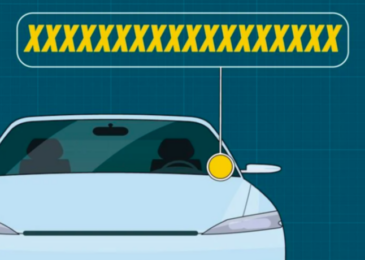A VIN decoder is an essential tool in the automotive industry, providing a wealth of information about vehicles through a simple code known as the Vehicle Identification Number (VIN). In this article, we will explore the structure of a VIN, its significance, how a VIN decoder works, and its various applications across different sectors. A VIN is a unique code assigned to every motor vehicle when it’s manufactured. It consists of 17 characters (digits and capital letters) that act as a vehicle’s fingerprint. No two vehicles in operation have the same VIN. This code provides a detailed history of the vehicle, including the manufacturer, year of production, and type of vehicle.
Structure of a VIN
The structure of a VIN is carefully defined and organized. Each character in a VIN has a specific meaning and provides certain information about the vehicle. Here’s a breakdown of what each segment of the VIN means:
Characters 1-3 (World Manufacturer Identifier, WMI): These characters identify the vehicle’s manufacturer and the country where the vehicle was built. For example, cars made by Ford in the United States feature a VIN that begins with “1FA”.
Characters 4-8 (Vehicle Descriptor Section, VDS): This segment provides specific information regarding the vehicle’s model, body type, engine size, and transmission type.
Character 9 (Check digit): This is a calculated value based on the other digits of the VIN. Its purpose is to validate the VIN’s authenticity.
Character 10 (Model year): This character indicates the model year of the vehicle. It is typically represented by a letter or a number (e.g., A for 1980 or 2010, B for 1981 or 2011, etc.).
Character 11 (Plant code): This character tells where the vehicle was manufactured.
Characters 12-17 (Vehicle Identification Section, VIS): These digits represent the vehicle’s serial number and provide information that is specific to each manufacturer.
How a VIN Decoder Works
A VIN decoder extracts information from the VIN by matching each segment of the code to a database that contains manufacturer specifications and vehicle details. This process allows anyone to access comprehensive information about a vehicle’s history, features, and specifications merely by entering its VIN into a decoder tool.
Applications of VIN Decoders
VIN decoders are utilized in various sectors for numerous purposes:
Automotive Industry: Dealerships, auto manufacturers, and repair shops use VIN decoders to order the correct parts and understand specific configurations of a vehicle.
Used Vehicle Buyers: Before purchasing a used vehicle, buyers can use a VIN decoder to verify the vehicle’s condition and history, such as past accidents, service history, and previous ownership.
Insurance Companies: Insurers use VINs to accurately assess the risk associated with insuring a particular vehicle, which helps in setting premiums and identifying potential fraud.
Law Enforcement: For recovery of stolen vehicles and verification during traffic stops or vehicle inspections, law enforcement agencies rely on VINs.
Regulatory Compliance: Governments use VINs to ensure compliance with safety, emission, and import regulations.
Benefits of Using a VIN Decoder
The use of a VIN decoder is highly beneficial in various scenarios:
- Transparency and Trust: It increases transparency in vehicle transactions and builds trust among buyers and sellers by providing a reliable source of detailed vehicle information.
- Cost Efficiency: It helps users avoid costly mistakes, such as ordering incorrect parts or unknowingly purchasing a vehicle with a troubled history.
- Enhanced Safety: It ensures that vehicles are appropriately matched to parts and services that meet the manufacturer’s specifications, thereby enhancing safety.
- Regulatory Compliance: It aids in meeting regulatory standards by providing precise vehicle data.
Conclusion
A VIN decoder is a powerful tool that serves multiple stakeholders in the automotive industry. By understanding the wealth of information encoded within each vehicle’s VIN, individuals and businesses can make more informed decisions, ensure compliance, and enhance operational efficiency. Whether you are a car enthusiast, a potential car buyer, or someone involved in vehicle regulation, understanding how to use a VIN decoder can significantly broaden your automotive knowledge and help in numerous practical ways.







